The 8 + 1 News from the Logistic Sector, which will influence the Supply Chain Industry in 2024
Recent events present a vivid picture of difficulties and breakthroughs in the complicated global business and logistics tapestry. Unraveling stories of maritime tensions, strikes at major transportation hubs, and the emergence of alternative energies is keeping the global supply chain on its toes by seas of change. Have a look through turbulent periods of uncertainty and innovation that influence the interrelated globe of logistics.

Source: www.canva.com
1) Problems in the Red Sea might influence the global supply chain
Do you remember the problem with the Panama Canal we pointed out last time? Another quartal is influenced by another canal. A string of attacks on commercial ships in the Red Sea have raised concerns about the safety of global commerce routes. Geopolitical tensions have risen, particularly in relation to the Israel-Hamas war, with Iran-backed Houthi rebels targeting cargo ships they suspect are associated with Israel.
The Red Sea has become a focus point, acting as a significant gateway to the Suez Canal. Every day, 50-60 vessels traverse the Suez Canal, accounting for approximately 30% of worldwide container traffic. However, recent occurrences call into question the superhighway’s suitability for international trade.
One main source of concern is the Houthi rebel misidentification of vessels. A container ship and a bulk grain cargo ship were recently targeted with the false notion that both were linked to Israel. However, one of the vessels had no such connection, indicating the rebels’ lack of awareness about passing ships.
The consequences for global trade are considerable. The uncertainty surrounding the authenticity of Houthi vessel data raises concerns about the safety of vessels that have previously been linked to Israel. This uncertainty may result in the imposition of war risk premiums for vessels traveling via the Red Sea and Gulf of Aden, adding to the already-existing inflationary pressures.
Recent events may cause a rethink of the use of the Suez Canal in terms of commercial routes. Some Israeli-owned ships have already changed course and are circumnavigating Africa’s west coast and the Cape of Good Hope. For example, the Suez Canal cuts the distance between the Arabian Sea and London by around 8,900 kilometers (5,500 miles).
While this alternate route is more expensive in terms of fuel, it avoids the growing Suez Canal fees, which are projected to rise by 15% in January 2024. Simultaneously, it supports Russia’s ambitions to open the Northern Sea Route to Asia.
In reaction to missile threats in the vicinity, Israeli ports are taking precautions and are closing. The Israeli government is providing extra coverage to carriers who are unable to obtain war risk insurance. Notably, since the start of the crisis, Zim (Zim Integrated Shipping Services Ltd.) has been the only carrier to implement a war risk insurance premium of $20 to $100 per container.
As tensions remain, the maritime industry confronts the prospect of higher expenses, as seen by rising rates from Chinese origins to Israel. The unfolding crisis highlights the complicated connection between geopolitical events and global trade logistics issues (Freight waves.com, Lori Ann LaRocco).
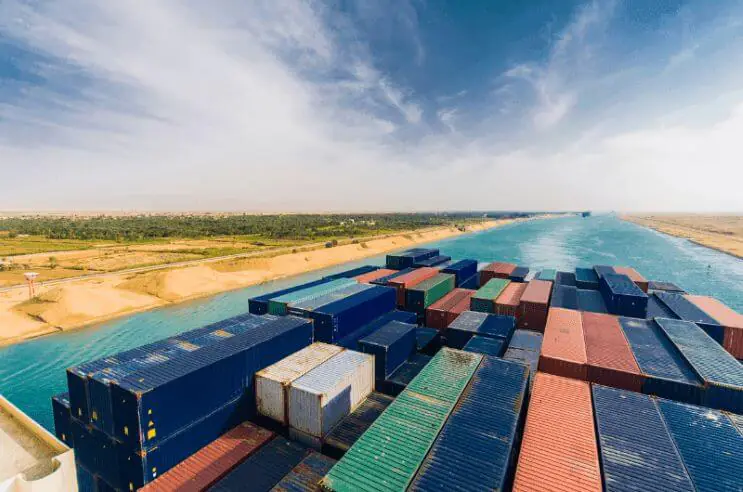
Source: www.canva.com
2) Hydrogen gains traction in the maritime sector: San Francisco’s hydrogen-powered ferry sets the trend
As hydrogen emerges as a potential fuel for long-distance transportation, its viability is being investigated in a variety of applications. One prominent example is the Sea Change, a hydrogen-powered ferry now operating on the San Francisco waterfront. This action, led by the business Switch, received a big boost last month with a $10 million investment from Nexus Development Capital.
Switch, the company that created the Sea Change, is currently regarded as a leader in advanced decarbonized assets in the United States. The catamaran ferry, which debuted in August, is an important proving ground for the dependability and efficiency of hydrogen as a maritime fuel. Nexus is a firm specializing in early-stage infrastructure investments, emphasizing the importance of creative initiatives in low-carbon technologies.
Tip: Find out more about the green and blue economy which is a hot topic in the logistics industry.
Switch’s CEO and founder, Pace Ralli, stated that the financing allows the company to focus on increasing its fleet and exploring new commercial prospects. Unlike its retrofits, the Sea Change was purpose-built in a shipyard in Bellingham, Washington, and was approved by the US Coast Guard. This regulatory approval not only ensures safe operation, but also allows for larger ferry designs capable of faster speeds and longer itineraries.
Switch’s expansion aspirations are consistent with the larger push for hydrogen usage in transportation, with maritime applications serving as a possible catalyst for wider adoption. Ralli sees the maritime industry as a hub for hydrogen supply, benefiting not only shipping but also other industries such as trucking.
Regarding fuel supply, Ralli confirmed that the San Francisco Bay Area currently has enough hydrogen to support the Sea Change. The acceptance of hydrogen in the maritime industry could open the door for widespread adoption in various transportation areas.
As a transportation fuel, hydrogen can be used in a variety of ways, including injecting hydrogen into a fuel cell, which converts it into electricity to power an electric motor. Another way is to introduce hydrogen into an engine using ammonia, which is being investigated by businesses such as Amogy. The New York-based business is working on a method that separates hydrogen from ammonia, addressing worries about emissions from direct burning.
As the renewable energy industry focuses on transportation markets, total cost of ownership becomes increasingly important. Tax credits are available for hydrogen, particularly green hydrogen, which adds to its appeal as a low-carbon fuel. The Sea Change project is a big step forward in demonstrating hydrogen’s possibilities in maritime applications, paving the path for potential breakthroughs in the transportation sector as a whole issue (Freight waves.com, John Kingston).
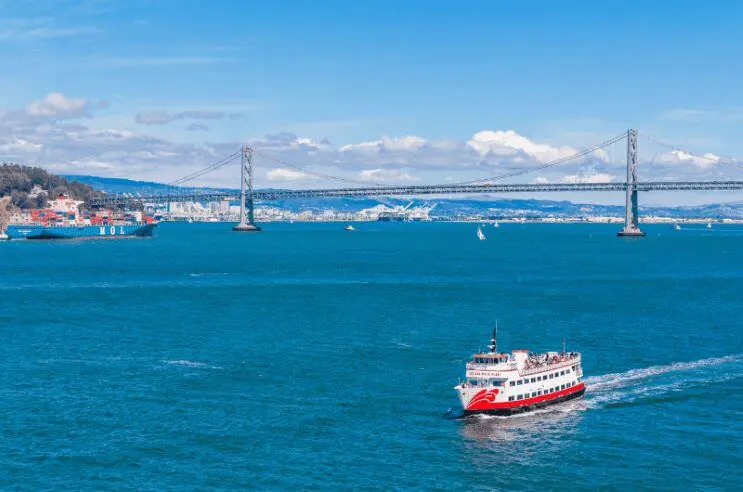
Source: www.canva.com
3) Teamsters’ Strike Causes Delays at DHL’s Cincinnati Air Cargo Hub
On December 8th, 2023, over 1,100 union workers at DHL’s air cargo hub at Cincinnati/Northern Kentucky International Airport staged a walkout, disrupting one of DHL’s major logistics facilities during the busy shipping season of Christmas. DHL is the biggest air freight business worldwide. The International Brotherhood of Teamsters called the strike, citing unfair labor practices at DHL Express, a subsidiary of Deutsche Post in the United States.
Tip: Read about the other 2 “biggest” of air freight and much more about air freight transportation.
DHL Express anticipated the strike action and implemented contingency arrangements, including hiring substitute staff and redirecting flights and cargo to other DHL operations throughout the United States. In sympathy with the Cincinnati strike, the firm anticipates job strikes at other pickup and delivery locations across the country and plans to hire substitute workers in those places. Despite the strike, DHL stated that it is confident in sustaining service performance and that contingency plans are in place to avoid substantial disruptions.
Along with facilities in Hong Kong and Germany, the Cincinnati hub is one of DHL’s three worldwide superhubs. The hub is crucial to DHL’s global operations, processing an average of 350,000 items each day with 130 flights and a fleet of 60 aircraft.
Negotiations between the Teamsters and DHL to negotiate a union contract at the Cincinnati airport have been ongoing since July. This comes after DHL’s ramp and tug workers voted to unionize in April. Over 6,000 DHL employees are represented by the Teamsters in the United States.
Union officials have accused DHL of unfair labor practices, accusing the business of disciplining or sacking workers who participate in union activities. The National Labor Relations Board has also received complaints about DHL spying on off-site union meetings and interfering with workers’ efforts to unionize.
DHL, which is presently in contract negotiations, declined to comment on the charges but emphasized its commitment to supporting employees’ legal right to unionize (wsj.com, Liz Young).

Source: www.canva.com
4) In the midst of zero-emission mandates, hydrogen-powered trucks are gaining traction in California
As the state tightens restrictions, requiring zero-emission commercial trucks beginning January 1, 2024, truckers in California are increasingly turning to hydrogen fuel-cell technology. While battery-electric trucks dominated the early market, IMC’s Jim Gillis and other heavy-duty truck operators are counting on hydrogen for long-distance travel.
Gillis, who is about to receive his first hydrogen electric fuel-cell Nikola trucks, admits the hazards of first-generation technology but hopes to have 50 of these rigs operational by the end of 2024. Due to the lack of big batteries, proponents of hydrogen believe that it allows for longer trips, faster refueling, and allows trucks to carry heavier loads.
According to California’s tough laws, new trucks at state seaports must be zero-emission vehicles by January 1, 2024. The state’s long-term goal is to phase out big diesel rigs within the next two decades by increasing the mix of clean fuels in truck sales.
The haste to meet these standards has resulted in a boom in the purchasing of diesel trucks and zero-emission vehicles. The move to hydrogen and battery-electric heavy rigs, on the other hand, comes at a considerable cost, with these vehicles starting at roughly $450,000, which is triple the price of a diesel truck. State subsidies, particularly from California, are essential to truckers’ ability to purchase these vehicles.
According to Parker Meeks, CEO of hydrogen truck manufacturer Hyzon Motors, hydrogen is two to four times more expensive per gallon than diesel. Meeks expects that the price of hydrogen will fall to parity with diesel over the next three years as fuel becomes more widely available.
At the moment, hydrogen-powered freight vehicles are 150–180% more expensive than equivalent diesel engines. However, by the end of 2030, hydrogen-powered trucks are predicted to be significantly cheaper, with forecasts predicting that they will cost between 50% and 60% less than comparable diesel versions.
Battery-electric vehicles have dominated the market, with over a dozen California companies now using them for freight hauling. However, due to battery range and recharging times, they have limits on longer journeys. Hydrogen-powered trucks, with a range of up to 500 miles and a refilling period of 30 minutes, are becoming more appealing for long-haul operations.
Nikola stands out as a leader in the hydrogen truck market, with established manufacturers such as Kenworth, Hyundai Motor, and Volvo Trucks all pursuing hydrogen fuel-cell big rigs. Despite the potential of hydrogen, industry analysts point out that hydrogen-fueling facilities lag behind battery-electric infrastructure, putting hydrogen trucks in a beta phase.
While battery-electric trucks excel at short excursions, such as ferrying containers between ports and warehouses, hydrogen vehicles’ larger ranges and faster refueling make them desirable for voyages of more than 100 miles. The trucking industry’s transition toward hydrogen suggests a potential turning point in the path to zero-emission heavy-duty transport, with California’s legislation setting a precedent (wsj.com, Paul Berger).

Source: www.canva.com
5) A proposed FRA rule to prevent Chinese rail cars from entering the US freight network has gained support
The Federal Railroad Administration’s (FRA) proposed regulation to prohibit Chinese-made freight rail cars from entering the US freight rail network has been approved by trade groups including the Rail Security Alliance (RSA) and the Railway Supply Institute (RSI). According to the rule, new freight rail cars in the United States must be constructed in a country that is not on the United States’ watchlists for national security concerns or intellectual property law infractions.
In the proposed rule, China is the primary country on all U.S. watchlists. The RSA was formed in 2015 in response to concerns about Chinese state-owned firms vying for dominance in the global railcar industry. The proposed regulation is consistent with the RSA’s attempts to limit Chinese influence in North America.
Railcar manufacturers would be required to verify to the FRA that each freight car complies with the requirement before operating on US railroads under the proposed rule. While the law does not require continuous certification, it does not apply to aftermarket activities such as repairs or maintenance.
The RSA worked with stakeholders, including RSI, to persuade Congress to consider limits on freight railcar manufacturing sources. Senators John Cornyn and Tammy Baldwin introduced the SAFE Trains Act, which influenced the Infrastructure Investment and Jobs Act of 2021, which spurred the FRA to produce the proposed rule.
The FRA rule intends to alter the existing federal law on freight rail car standards, with a comparable legal structure in the United States-Mexico-Canada trade agreement. The RSI has voiced preliminary support, highlighting the importance of safeguarding the freight rolling stock supply chain against unfair competition and rogue actors.
The change is crucial as freight rail vehicles become more technologically advanced, with sensor systems, GPS technology, and communication technology that may carry sensitive data. Concerns about national security and potential data vulnerabilities have grown as rail carriages establish interconnected networks.
Tip: If you are interested in more advanced technologies used in logistics, read our article about 5 mind-blowing ways advanced tech is revolutionizing logistics.
The proposed rule reflects congressional intent and tries to prevent Chinese state-owned firms, like CRRC, from producing rail cars for the US-Canada-Mexico interchange system. The initiative is consistent with broader concerns about protecting sensitive information and preserving control over key infrastructure (Freight waves.com, Joanna Marsh).
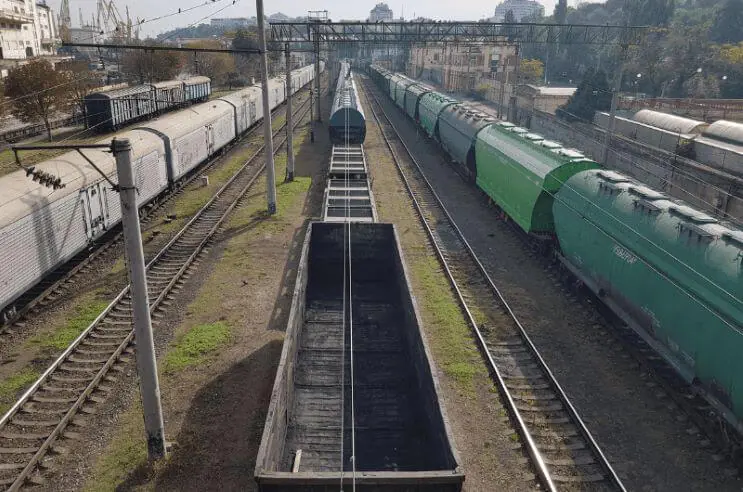
Source: www.canva.com
6) Going Greener with Wind-Assisted Propulsion for Future Ships
The shipping sector is reintroducing wind propulsion, an antiquated technology, in an effort to mitigate climate change concerns and lower greenhouse gas emissions. Since 90% of commodities are shipped worldwide by sea, commercial cargo ships are responsible for 3% of annual carbon emissions.
Innovative wind-assisted propulsion technologies are being investigated as a means of combating this, as they can capture wind energy and drastically cut emissions and fuel usage. According to the International Windship Association, windships are becoming more and more popular, and big players like Maersk and NYK are experimenting with different technologies like rotor sails and flexible fiberglass wings.
In one of the most recent trials, the 751-foot bulk carrier Pyxis Ocean was equipped with WindWings, which allowed the ship to reach 16.2 knots while using little engine power. The technology shows potential in lowering the payback period and overall fuel expenditures for specially designed wind-assisted ships, despite obstacles like cost and hull modification. Wind-assisted propulsion can steer the shipping industry toward more environmentally friendly practices and is in line with worldwide efforts to reach aggressive emission reduction objectives and switch to cleaner fuels.
The development of wind-assisted technologies is a critical step forward in building a more sustainable future for international cargo transportation, despite the challenges and competing interests in the shipping sector. Combining traditional wind power with contemporary technology could cause a seismic shift in the maritime industry, bringing back not only historic sailing routes but also the possibility of a greener, more efficient shipping sector, as the world looks for novel ways to lessen the environmental impact of shipping (wunc.org, Scott Neuman).
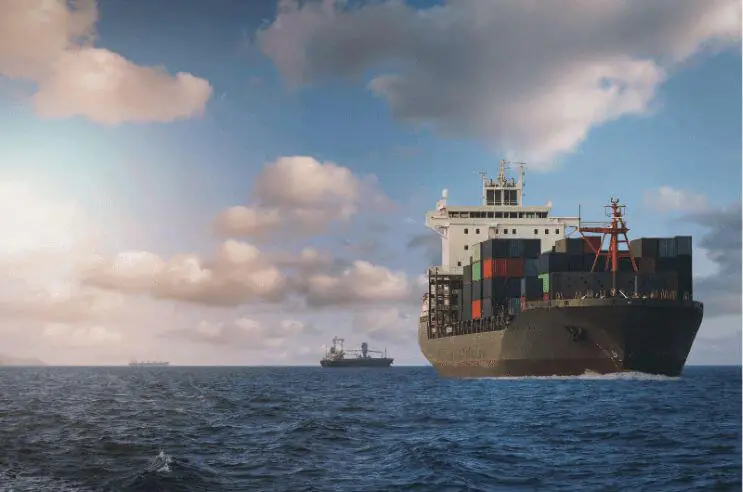
Source: www.canva.com
7) Over $500 million in railroad freight is halted as a result of the border closure
Union Pacific and BNSF Railway are supporting the restoration of critical border crossings in El Paso and Eagle Pass, Texas, where rail operations were halted due to an influx of migrants. With roughly $200 million in trade flowing through these crossings every day, the shutdown since Monday 18th November 2023 has resulted in a temporary suspension of nearly $500 million in trade. The restrictions harm 45% of Union Pacific’s cross-border commerce, placing a goods embargo on roughly 60 trains each day, affecting the economy and causing a labor dilemma for rail firms.
The shutdown has generated a conflict between railroad operators and government officials due to safety and security concerns for migrants crossing the border on trains.
Union Pacific and BNSF disagree with official numbers, claiming that relatively few migrants attempt to cross aboard trains and emphasizing their security measures, which include X-ray technology.
The restrictions have alarmed businesses including agriculture and chemicals, with up to two-thirds of US agricultural shipments to Mexico potentially jeopardized. The US Chamber of Commerce and agricultural trade groups are pressing the administration to address the border problem without interrupting lawful commerce, citing the considerable economic damage caused by rail crossing bans (cnbc.com, Lori Ann LaRocco).

Source: www.canva.com
8) In November, truck tonnage fell by 1.2%
The American Trucking Associations (ATA) reported a 1.2% drop in truck tonnage in November, indicating a protracted freight recession within the industry. The For-Hire Truck Tonnage Index declined to 113.7 from 114.7 in November 2022, representing the ninth consecutive year-over-year decrease. Despite occasional improvements, the freight sector remains in a recessionary position, and ATA Chief Economist Bob Costello observed that while retail stocks are reducing, a significant increase in freight levels is not expected in future months.
The trucking industry’s difficult 2023 continued into November, with the indicator falling 1% sequentially from October. Costello emphasized the unpredictable trajectory by noting the repeated pattern of freight improvements followed by setbacks. Despite the National Retail Federation’s forecast of a 3% to 4% increase in Christmas shopping season expenditure, the trucking sector is still skeptical of a big rebound in the near future (ttnews.com, Dan Ronan).
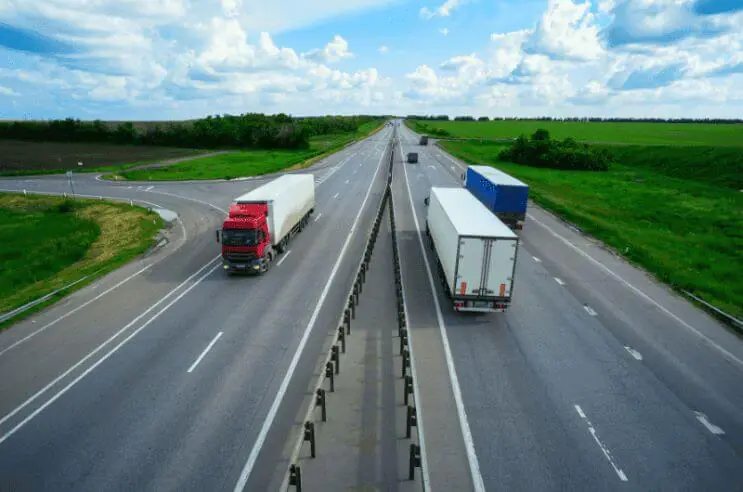
Source: www.canva.com
9) Fun News at the End: Disparities in Smoking in the Logistics Industry: An Urgent Call to Action
Data from public health shows a troubling trend in the logistics industry, with more than one in every five employees in England’s logistics occupations smoking, which is three times more than in other industries. The data from the Office for Health Improvement and Disparities (OHID) show a 5% increase in smoking inequality in the logistics sector over the last five years, with professionals falling behind national smoking cessation trends. The prevalence of smoking in manual logistics professions is concerning, with these individuals being 65% more likely to smoke than the general smoking rate in England.
The growing smoking inequality gap emphasizes the need for comprehensive smoking cessation help for all members of society, particularly those working in logistics. To address this issue, HR departments are being advised to take action and support smoking cessation programs in the workplace.
The UK government’s ‘swap to stop’ project, which provides free vape starting kits to smokers, is an important component of the national aim to decrease smoking to 5% of people in England by 2030. A recent study conducted by the University of East Anglia and the National Health Service (NHS) Stop Smoking Service found that vape starter kits were beneficial, with 42% of individuals stopping smoking within a month.
The research emphasizes the importance of human resource departments in routine and manual sectors addressing the issue, establishing a smoke-free workplace environment, and helping employees who want to quit smoking. Beyond the benefits to individual health, successful smoking cessation efforts lead to a healthier and more focused workforce, eventually benefiting both individuals and businesses (forwardermagazine.com).

Source: www.canva.com




